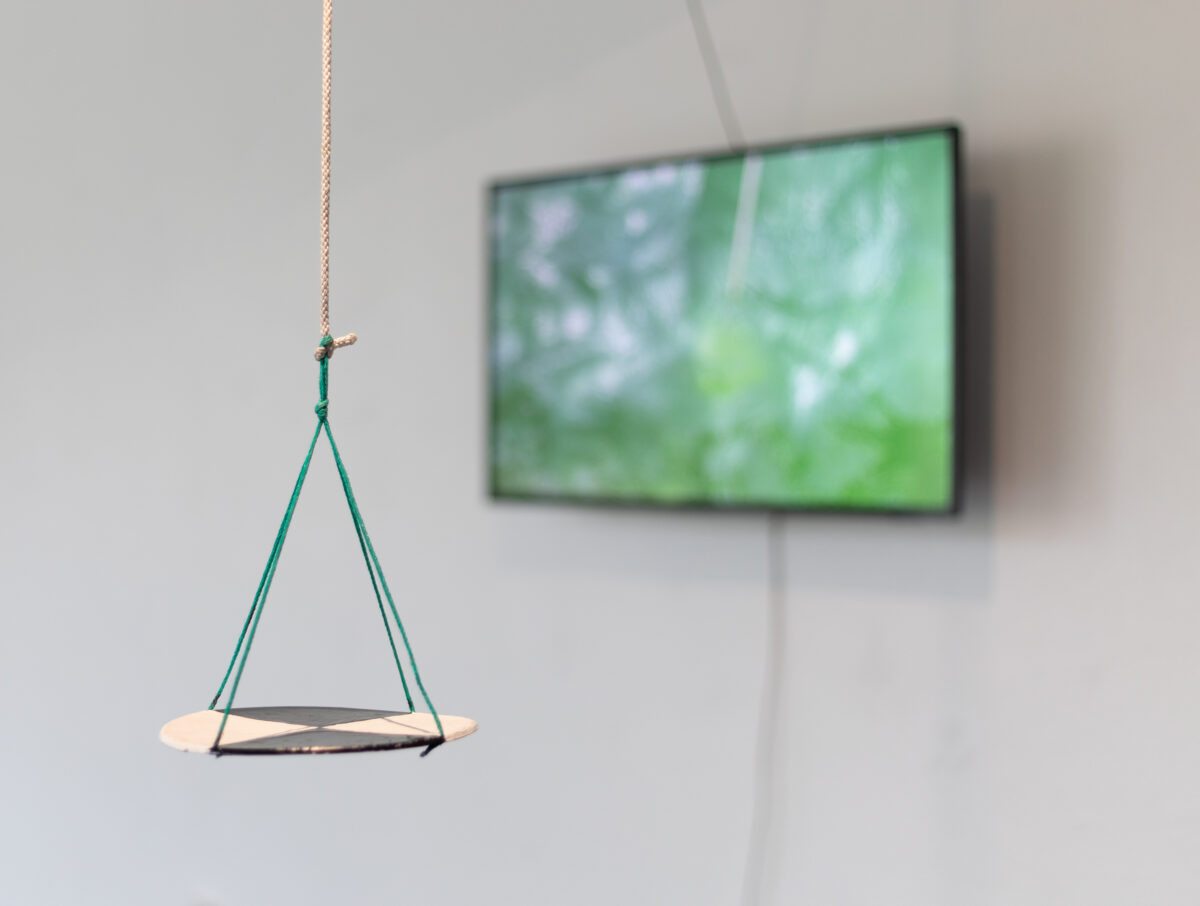Field Casting
3.2.-5.3.2023
Titanik Gallery, Turku
Field Casting is an exhibition by the London-based artists Matterlugy (Helena Hunter and Mark Peter Wright). During 2019–2023 they worked alongside marine biologists at the Archipelago Research Institute on the Island of Seili to understand how the Baltic Sea is sampled, monitored and modelled in relation to local and global climate change.
The exhibition investigates scientific ‘fieldwork’ as a site and subject of study, zooming in on the practices, tools and perspectives embroiled in the production of climate data. It explores the relationship between field practice and automated data collection and highlights knowledge as an event that is materially entangled with the lives of humans and nonhumans.
Across sculpture, film and sound, Matterlurgy cast a unique assemblage of artefacts, actors and stories: the scientist body, tools and technologies of capture, processes of reading, recording and translating phenomena that often occlude apprehension.
The front space of the gallery features Professor Ilppo Vuorinen sampling plankton in the Baltic Sea. Vuorinen is filmed “throwing the line”, a posture he has performed countless times over the 40 years of his research. His hands are cast in the same position from an alginate mould, a sculptural material that includes brown algae in its ingredients. Adjacent is a film that shows a Secchi disc being immersed in water. Created in 1865 by Angelo Secchi, the black and white disc is still used today to measure the transparency of water. By lowering it into the ocean, scientists rely on the human eye for recording thresholds of vision. Amongst this assemblage is the presence of automated data and the promise and threat of digital sampling amongst the slow-phasing of scientific bodies.
In the back space of the gallery, 3D scans of Herring Otoliths (ear bones) are displayed. The voices of scientists Professor Marjut Rajasilta and Dr Katja Mäkinen filter through the air and discuss how climatic data is stored within the ear bones of fish, how they extract and interpret this information and the possible futures of the Baltic Sea. Next to this work is a text score for microscopic looking, developed with Ilppo Vuorinen, and a film that showcases the vibrant worlds of nonhumans as they are partially glimpsed through technological apparatus.
Field Casting is curated by Taru Elfving as part of the programme How do you know what you know? Exercises in Attentiveness which presents new artworks commissioned by CAA in collaboration with the Archipelago Research Institute (University of Turku) in the project Spectres in Change. Since 2017, CAA has focused on nurturing the sharing of methods, protocols and rituals – some inherited or borrowed, others invented or emergent – between artists visiting the island of Seili and scientists with decades-long embedded practice in Turku Archipelago. The exhibition and the accompanying events invite wider participation in this ongoing multidisciplinary dialogue and highlight the significance of fieldwork in the face of the escalating ecological emergency.
The exhibition is produced by CAA in partnership with Titanik Gallery and the Archipelago Research Institute (University of Turku). With support from the Kone Foundation, Swedish Cultural Foundation in Finland and Oskar Öflund Foundation. Thanks to Eero Merimaa and sculpture students at Turku University of Applied Sciences, Tom Ranson, and Alex Ball at the Natural History Museum in London, UK.
More information on the exhibition and Titanik Gallery here.
Events
Fri 3.2. at 15.00
Introduction to the exhibition followed by discussion about field research of environmental changes in the Archipelago Sea: How is climate data stored, for example, within the ear bones of fish? How is this information interpreted and what can it tell of the possible futures of the Baltic Sea? The artists and curator of the exhibition in conversation with professor Jari Hänninen and researcher Katja Mäkinen from the Archipelago Research Institute. The event is in English.
Sun 19.2. at 14.00
Tour of the exhibition and discussion about art-science collaboration and fieldwork on the island of Seili. Professor emeritus Ilppo Vuorinen in conversation with curator Taru Elfving. The event is in Finnish.
Bio
Matterlurgy is a collaborative practice between London-based artists Helena Hunter and Mark Peter Wright. Their work engages with the environmental sciences: its methods, processes and technologies for sensing, translating and predicting climate change/damage. Working across disciplines and media, they combine the production of artworks with co-constructed events, exhibitions and live performances. They have produced projects about air pollution, river health, waste, flooding and climate modelling. Artworks have been made in relation to sites, including a hydropower station, disused steelworks, a laboratory for ice simulation and an abandoned copper mine. More information on Matterlurgy here.
Matterlurgy discuss their practice and the collaboration with the marine biologists at the Archipelago Research Institute in this interview with CAA.




